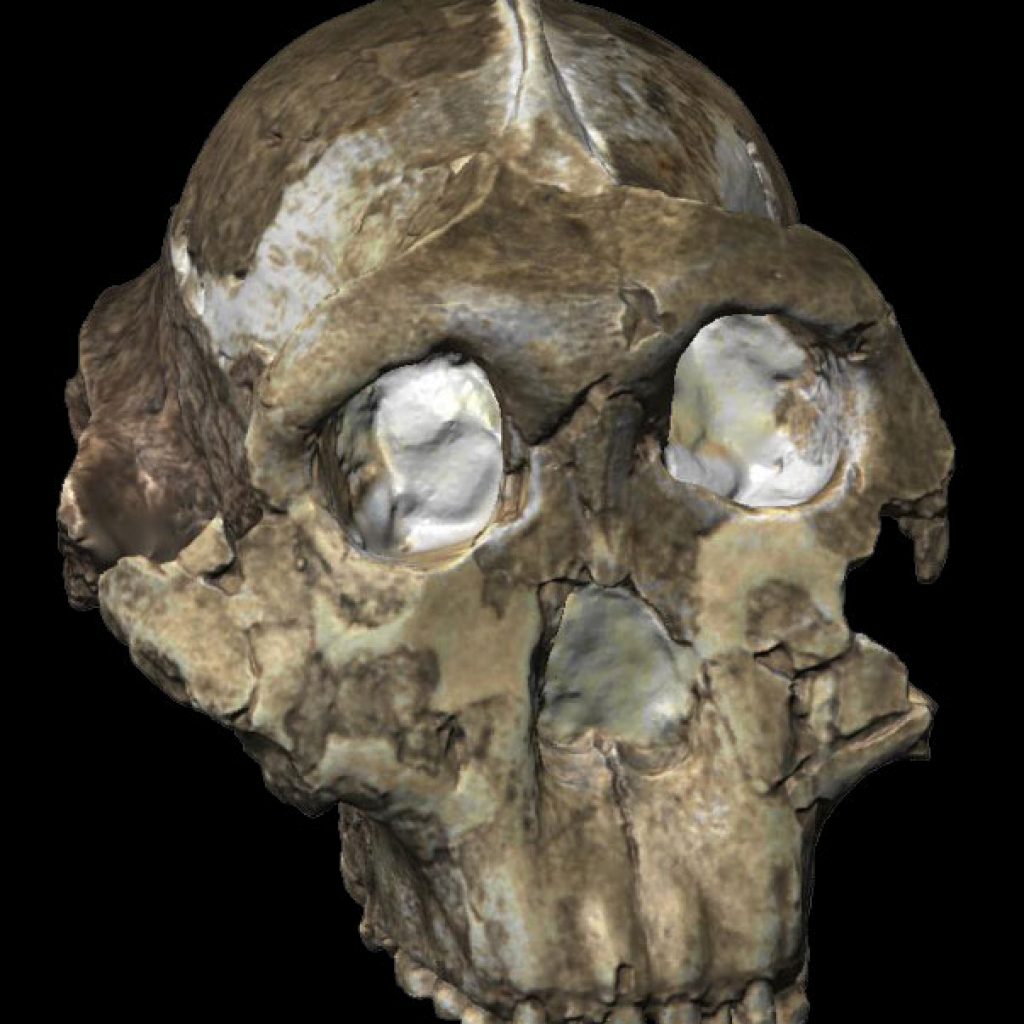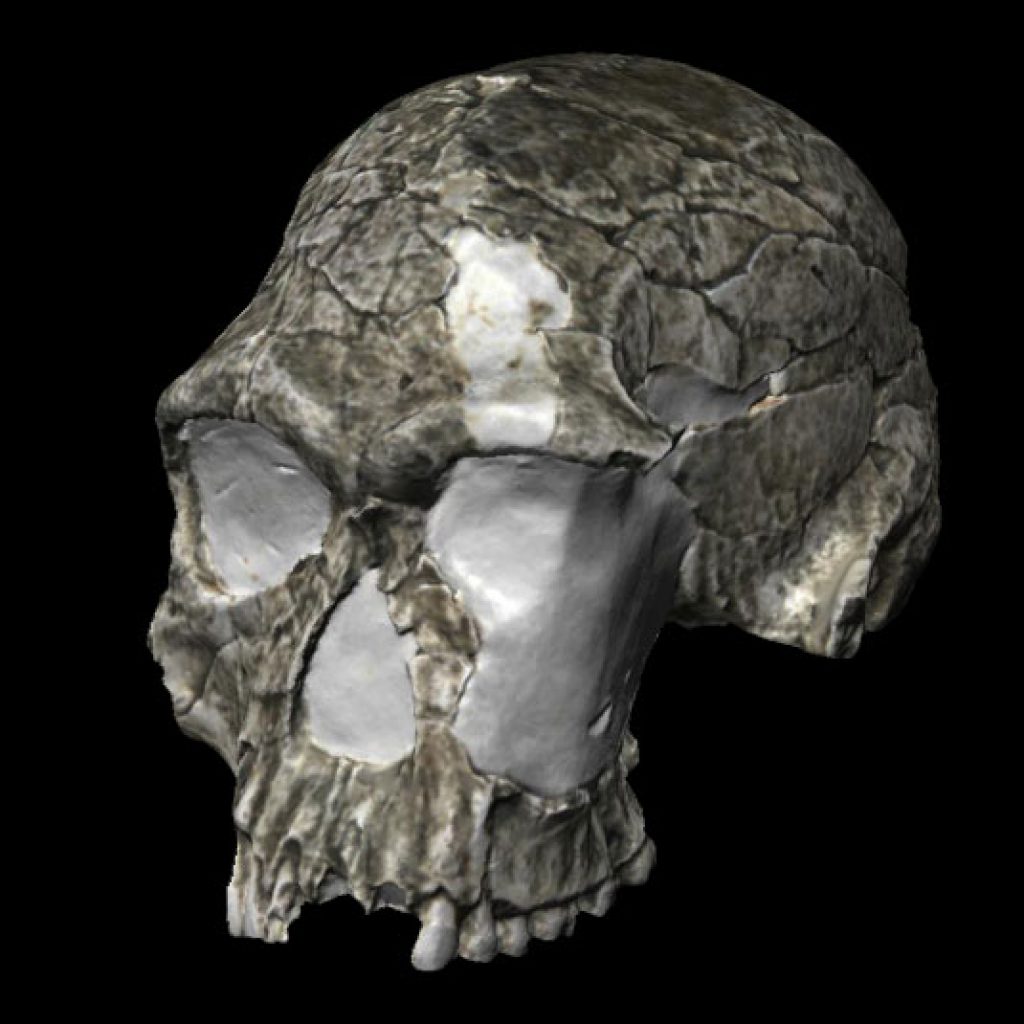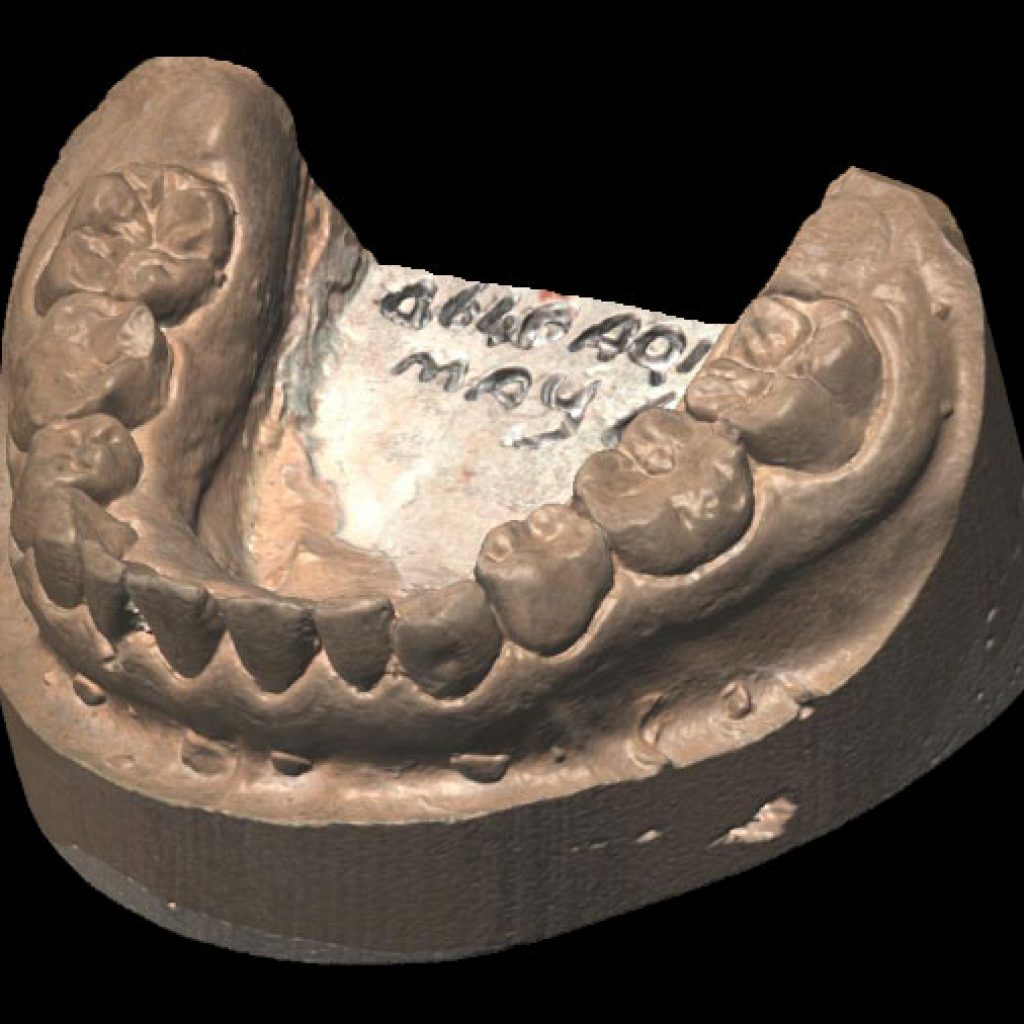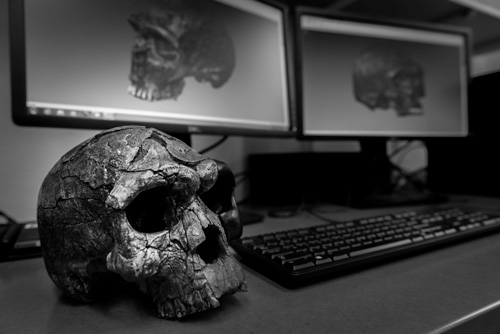Research
The research interests of the Palaeodiet Research Lab mostly focus on functional morphology of the masticatory apparatus in human and non-human primates, and on the importance of the role of diet in human evolution. We use different methods and approaches, mostly based on highly sophisticated computer models, ranging from dental wear studies to biomechanical and morphological analyses.

Projects

PROJECT 1: DIET AND ECOLOGY OF NON-HUMAN PRIMATES
Our understanding of extinct hominin diets is usually based on a limited number of fossil specimens. One way to address the fragmentary nature of the hominin fossil record is to use large comparative samples. Extant non-human primates are an important source of comparative information for the reconstruction of the diets of extinct hominins. Teeth are the most commonly recovered elements of the hominin fossil record and fossil teeth are typically worn. When an animal chews, the sliding contacts between upper and lower dentition cause the loss of the superficial enamel layer, and teeth begin to wear down. Because of the intimate relationship between food and teeth, the study of dental macrowear (visible to the naked eye) can provide direct evidence of what an individual ate in the past. Unlike microwear (visible only under microscope), dental macrowear is a cumulative process that occurs throughout the individual’s lifetime and thus reflects long-term diet. The major aim of this research project is to build up a large comparative dataset, including all great apes (orangutan, gorilla and chimpanzee) and some non-human primate species with specialised diets, such as the gramnivorous baboon gelada (Theropithecus gelada), the folivorous black and white colobus (Colobus guereza) and the hard-object feeding grey-cheeked mangabey (Lophocebus albigena) and tufted capuchin (Cebus apella).
PROJECT 2: DENTAL BIOMECHANICS
Biomechanics is the study of structure and function of biological systems, examining the internal and external forces acting on the body and the effects produced by these forces. In particular, dental biomechanics explores the mechanical relationships between tooth structures, occlusal loading and mastication. In this project we use a new 3D multi-disciplinary approach that combines Finite Element Analysis (FEA) with dental macrowear methods. The computer simulation of the interactions between upper and lower teeth during a normal chewing cycle will be used to calibrate the Finite Element models. Thus, we will be able to more realistically simulate and predict how stress and strain develop in teeth, cranium and mandible, allowing us to predict how these masticatory forces act on dental architecture in a comparative context and establish their significance and value in predicting diet. Integration of occlusal information with FEA will extend applications of new and exciting methods for functional analyses of the musculoskeletal system; an approach that may eventually inform on applied settings like orthodontics, where the relationship between morphology and dental occlusion is still not well understood.


PROJECT 3: THE ROLE OF DIET ON EARLY HUMAN EVOLUTION
Diet is a direct reflection and driver of the biology, ecology and evolution of any species. Dietary analysis is particularly important when studying extinct taxa where behaviour and ecology cannot be directly observed and anatomy is represented by partial or fragmentary remains. Changes in diet and in food processing technology are key events in human evolution. This is particularly true for Plio-Pleistocene hominins from East and South Africa, a time of climatic fluctuation, but overall characterised by pronounced, progressive cooling and increased aridity. Significant morphological differences found among these hominin species are commonly used for the identification of two distinct morphotypes: a “gracile” form that includes all Australopithecus species, and a “robust” type that includes all Paranthropus species. It is generally accepted that these distinctive morphologies reflect different feeding behaviours. However, interpretations of their feeding habits through morphological and biomechanical analysesare inconsistent with recent dietary reconstructions based on dental microwear and stable isotopes yielding conflict results. All methods used to reconstruct the diets of the past have their strengths and weaknesses, and while the intake of specific foods can be detected by certain techniques, specific foods and dietary changes can be invisible to others. Consequently, limiting these studies to one specific technology will always generate incomplete results. In this project we will for the first time combine information from the study of palaeoecology, palaeoclimate, tooth chemistry, morphology, dental wear and biomechanics. These comprehensive analyses will enable the reconstruction of the whole dietary spectrum, which is particularly important for the interpretation of diet in these hominin species that lived under radically changing climatic conditions.
PROJECT 4: THE EVOLUTIONARY SIGNIFICANCE OF DIETARY EXPANSION IN EARLY HOMO
The evolution of early Homo coincided with dramatic climatic changes in Africa. This climatic variability determined the formation of various dynamic habitats, posing new ecological problems to our early hominin ancestors. The capability to adapt and adjust to environmental changes was one of the most successful elements, in evolutionary terms, of the human lineage. It is generally accepted that a significant dietary expansion, characterised by increased meat consumption, promoted the development of highly encephalised brains, allowing early Homo to expand their home range out of Africa. Three morphologically distinct species of Homo (H. habilis, H. rudolfensis, and H. ergaster) inhabited contemporaneously East Africa from 2 to 1,5 million years ago: did they occupy different niches? If so, did they exploit different food sources? In order to answer these questions, the Occlusal Fingerprint Analysis and Finite Element Analysis methods will be used to test if dental macrowear and morphological structures in early Homo were a result of different functional and biomechanical adaptations. These results will be compared with isotopic signals obtained from tooth chemistry analyses.


PROJECT 5: THE EMERGENCE OF MALOCCLUSIONS IN TRANSITIONAL HUNTER-GATHERER SOCIETIES
The increase in malocclusion (or misalignment of teeth) took place recently, between 18th – 19th centuries with the adoption of the modern lifestyle. It is believed that the introduction of soft and energy-rich foodstuffs in the daily diet caused a strong reduction of the masticatory forces, decreasing the number of chewing cycles and consequently shortening the duration of mastication. The decrease in masticatory-functional demands has brought about a disequilibrium in the dynamic relationships between occlusion and dentition, causing the increase in occlusal variation characterized by a misalignment of teeth. Here we propose to analyse the relationships between craniofacial structures, occlusal wear and normal and altered masticatory function, building multi-functional computer models. These sophisticated virtual biomechanical models will give us the possibility to interpret occlusal dynamics and simulate functional loading on the masticatory system and the resulting stresses and strains in the skulls.
About
The major goal of the Palaeodiet Research Lab is a better understanding of the relationship between diet, cranio-dental morphology, ecology and evolution in modern humans, our closest living relatives (monkeys and apes) and our extinct ancestors.
Lab
The Palaeodiet Research Lab is a highly multidisciplinary and dynamic team that investigates important biological questions related to humans in an evolutionary context.


